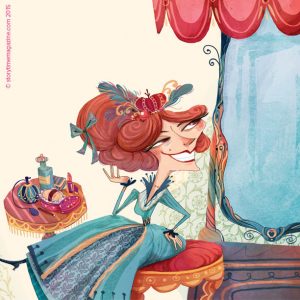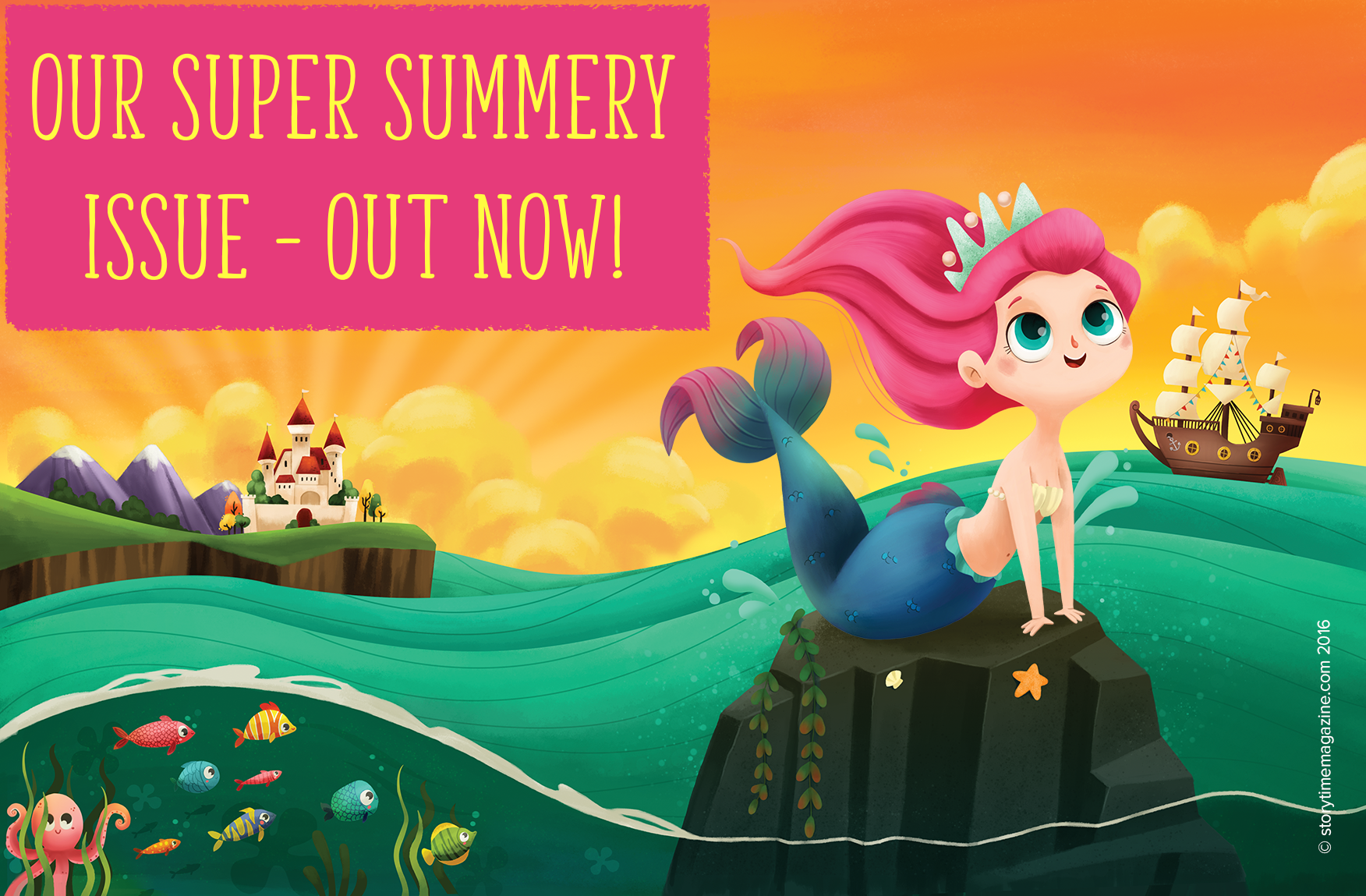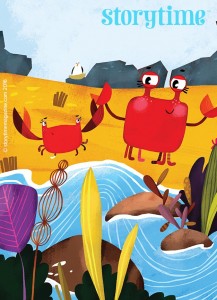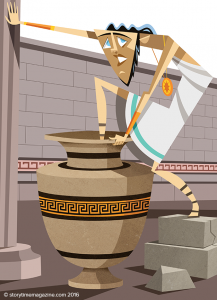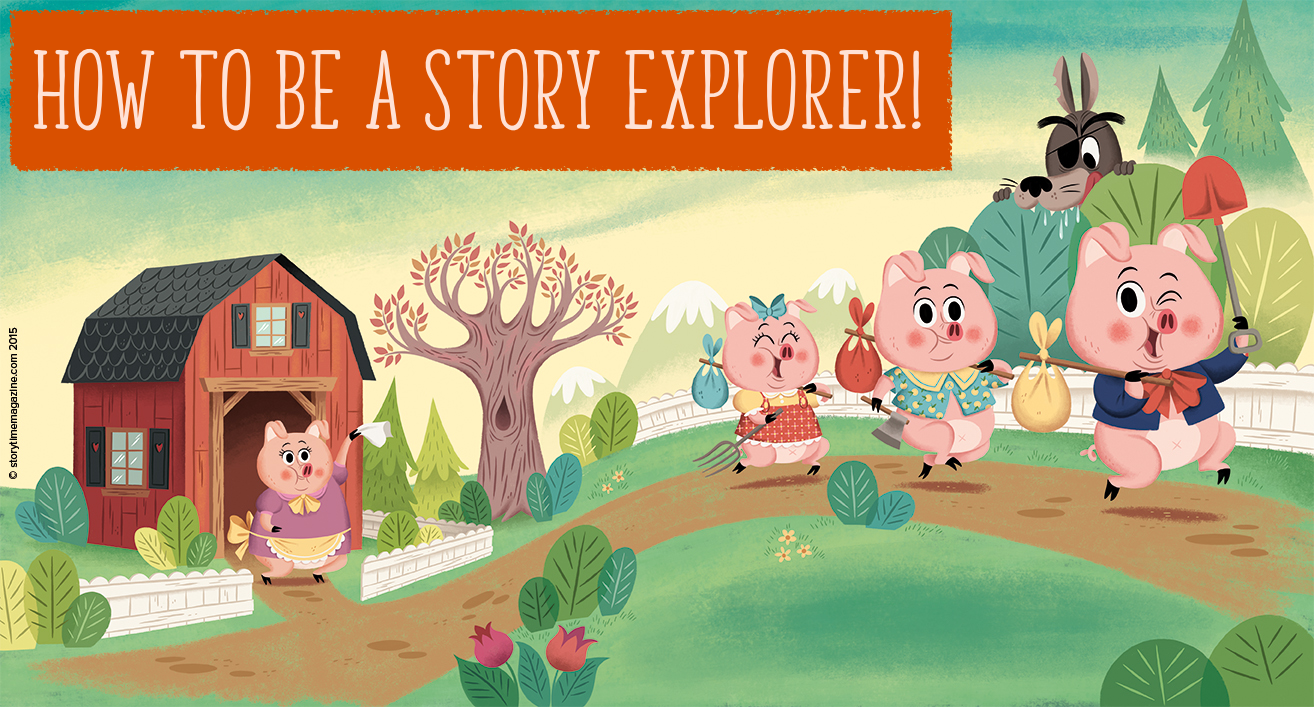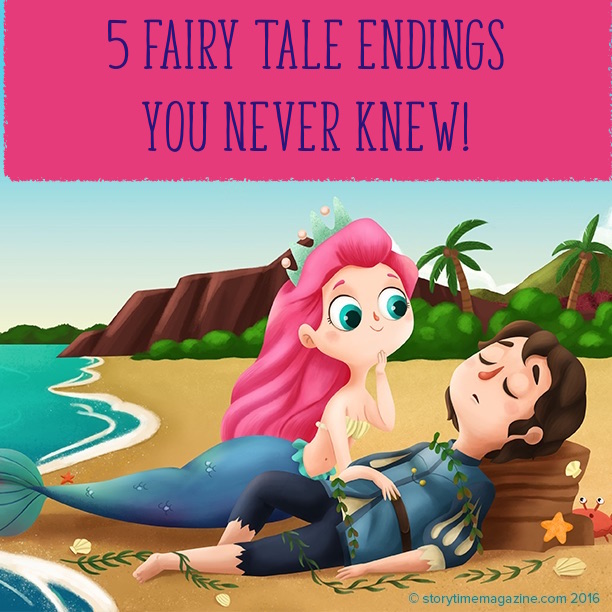 Diehard Hans Christian Andersen fans might have noticed that we tweaked the ending of our latest issue’s Favourite Fairy Tale, The Little Mermaid (Storytime 24). It pains me to fiddle with classics too much and I’m always wary of being disrespectful to the original author, so you’ll find our amendments nowhere near as extreme as Disney’s.
Diehard Hans Christian Andersen fans might have noticed that we tweaked the ending of our latest issue’s Favourite Fairy Tale, The Little Mermaid (Storytime 24). It pains me to fiddle with classics too much and I’m always wary of being disrespectful to the original author, so you’ll find our amendments nowhere near as extreme as Disney’s.
The Disneyfication of Fairy Tales
However, it’s partly because of Disney (and a whole host of priggish Victorian editors) that I felt the need to do any amends at all. Disney transformed the tragic (and religious) ending of The Little Mermaid, giving the audience a mermaid-marries-prince love story. And when Disney did away with this story’s unhappily every after (and the darker elements of many other famous fairy tales), they fundamentally changed the public’s expectation of these stories. Fairy tales became synonymous with happy endings. The princess finds her prince, the hero wins his prize and the bad guys get their just desserts.
The End of Unhappily Ever Afters
Over time, unhappily ever afters, darkness and peril have been edited out and watered down to make fairy tales more palatable to young readers. Given that a (slightly silly) 2012 survey found that parents don’t read many classic fairy tales to their kids because they consider them too scary, we don’t think it’s our place to ruffle feathers. We want to encourage reading for joy not nightmares.
In fact, when we surveyed potential readers before we launched our magazine, fairy tales were the top request. When we questioned that further, readers wanted the classic fairy tales that everyone knows and loves – not the darker, original versions, which have been lost in time. In short, our readers aren’t into unhappily ever afters. Hence fiddling with The Little Mermaid to make the ending a little more balanced and appealing.
5 Dark Fairy Tales
However, in the spirit of being fair to Mr Andersen and other fairy tale creators, I’ve gathered some of the most interesting unhappily ever afters. These endings haven’t made it into Storytime – given that our readers are aged 3 to 8, you should be able to see why…
1. The Little Mermaid (Storytime Issue 24) Having given up her life under the sea to win the heart of her prince, the Little Mermaid endures crippling pain. She walks on feet that “felt as if treading upon the points of needles or sharp knives”. Then she is struck dumb and unable to communicate with her one true love, and sees him marry the woman who wrongfully takes credit for saving his life. To add insult to injury, rather than stabbing her prince to save herself, she is doomed to spend 300 years as an ethereal “daughter of the air” before she can go to heaven.
2. Rumpelstiltskin (Storytime Issue 11) In truth, this is a fairly creepy story, though we strived to put a nicer and funnier version in Storytime. First, a father lies and gets the star of the story into a pickle, then the king is hideously greedy and forces her to marry him. To top it all, a weird little man wants to take away her child. In the conclusion, Rumpelstiltskin is so agitated when she guesses his name, he tears his body in half before smashing through the floor and going, presumably, to hell. Pretty grim (or Grimm?).
3. Cinderella (Storytime Issue 3) There are many versions of this classic rags-to-riches fairy tale all over the world, but one of the best-known ‘originals’ by Grimm is unexpectedly gruesome. In it, the two ugly sisters – desperate to squeeze their feet into the slipper – use a knife to slice off parts of their own feet (a toe and a heel). The game is up when the prince spots blood streaming from the shoe. There’s even a version where birds peck out the sisters’ eyes at the end. Eek.
4. Snow White (Storytime Issue 16) The wicked queen is truly horrid in the Grimm version of this family favourite. However, she does pay the harshest penalty. We just couldn’t bring ourselves to include the scene where she eats Snow White’s lungs and liver for dinner (or rather animal organs the huntsman brings to her after letting Snow White escape). And we also tweaked the ending – you’ll see why. When the wicked queen attends Snow White’s wedding to the prince, she is forced to wear a pair of red-hot iron shoes, heated by burning coals. She dies an agonised death dancing around with scalded feet.
5. The Frog Prince (Storytime Issue 21) Inspired by this fairy tale, the saying goes that you have to kiss a few frogs before you find your prince. It’s just as well that this is the version that became mainstream. In older tellings, the prince regained his true form either by being thrown against the wall or having his head chopped off. Understandably, for our age group, we stuck with the puckering up version!
Seeing how fairy tales have evolved over the years and reading the many versions that exist is one of the most interesting parts of our work. But making a call on how true we stay to originals and what to tweak for our readership is a challenge.
When we remove the truly gruesome bits, it’s not about molly-coddling, it’s more about fulfilling expectations. The truth is unhappily ever afters and gratuitous gore might have been the rage in the Grimm era, but right now, most people are after a happy ending – and that can’t just be down to Disney.
So apologies to Hans Christian Andersen, but we’ll stick with our slightly sweetened versions from now on. Do you agree? Let me know on Twitter or Facebook. We’re always interested to hear your views.
Here’s to reading happily ever after anyway…

(Storytime Ed.)
